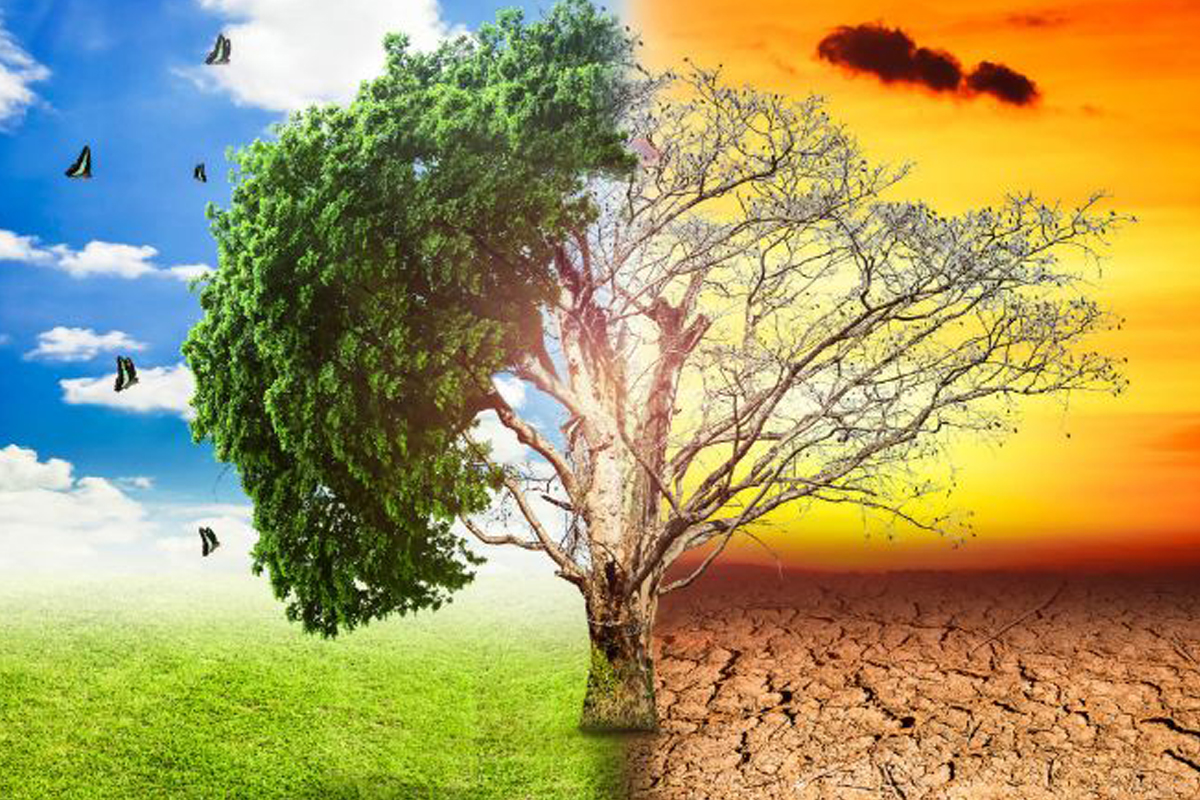Wildfires burn from coast to coast in US
Meanwhile, in the Northeast, weather officials issued red flag warnings from New Jersey to Massachusetts after a bout of modest weekend rainfall failed to douse the region's wildfire threat
India’s climate crisis is no longer a distant threat; it’s an urgent, daily reality. The staggering statistics on extreme weather events in 2024 ~ over 3,200 lives lost, millions of hectares of farmland ruined, and countless homes and livestock destroyed ~ paint a grim picture of a nation bearing the brunt of climate change.

Representation image
India’s climate crisis is no longer a distant threat; it’s an urgent, daily reality. The staggering statistics on extreme weather events in 2024 ~ over 3,200 lives lost, millions of hectares of farmland ruined, and countless homes and livestock destroyed ~ paint a grim picture of a nation bearing the brunt of climate change.
Extreme weather events were recorded on 255 of the first 274 days this year, underscoring a relentless increase that demands both immediate action and long-term strategic shifts. The implications of these events go beyond the physical destruction they bring in their wake. Every flood, heatwave, and storm disproportionately affects those least equipped to handle the aftermath. Rural and low-income communities, often lacking resources for recovery, are left increasingly vulnerable. When crops are destroyed or homes swept away, it’s the poorest households that face hunger, homelessness, and a future defined by loss. Climate change has ceased to be a concept debated in boardrooms; it’s a lived experience for millions of Indians. Yet, it is not only climate change driving this destruction. India’s pattern of unchecked development is a major contributor.
In regions like the Western Ghats, intensive quarrying and construction in ecologically fragile areas exacerbate landslides and flooding. Similarly, urban areas like Delhi have stripped away their natural defences by filling lakes, ponds, and drainage systems to accommodate relentless construction. The result: Increased flooding and higher temperatures, making cities more inhospitable each year. This combination of climate change and poor planning amplifies the impact of extreme events, transforming natural disasters into human-made catastrophes.
Advertisement
Data gaps further hinder effective response and planning. The lack of comprehensive records on property and crop damage obstructs efforts to measure the full economic toll of these events. Without accurate data, policymakers are left with incomplete information, making it difficult to allocate resources effectively or to understand the precise toll these events take on the economy and society. The absence of detailed loss data underscores the need for robust climate tracking systems and transparent reporting mechanisms, which can serve as the foundation for a proactive climate response.
What India needs now is a two-pronged approach: resilience-building for the immediate term and regulatory reform for sustainable development. The country must prioritise infrastructure that can withstand extreme weather, like improved drainage systems, flood resistant housing, and resilient agricultural practices. Simultaneously, stricter regulations on high-risk developments are essential to prevent further destruction in vulnerable regions. Ecologically fragile areas must be protected, and sustainable development should be embedded in urban planning frameworks. India’s escalating climate vulnerability is a call to action.
Addressing this crisis requires both a shift in mind-set and a commitment to policy reforms that prioritises resilience and sustainability. Climate change is no longer an abstraction or an inconvenience; it’s an existential challenge. The time has come to protect our most vulnerable populations, preserve our natural ecosystems, and rethink development practices that deepen our climate risks.
Advertisement